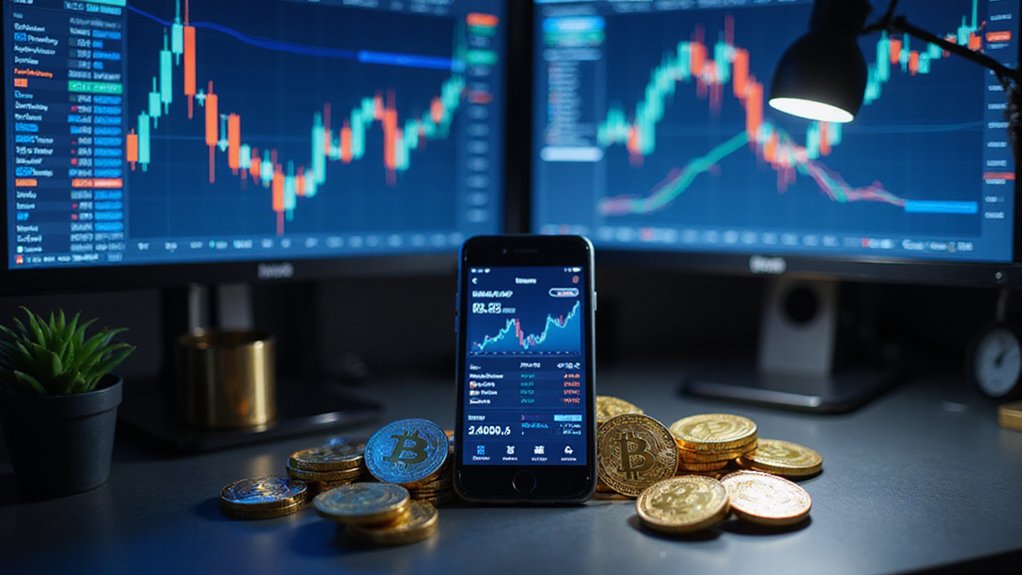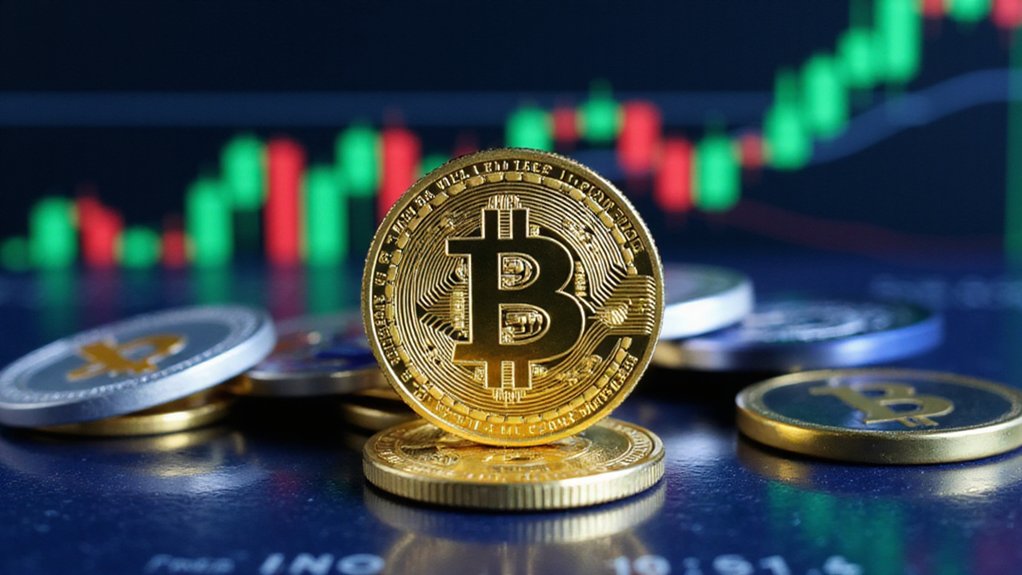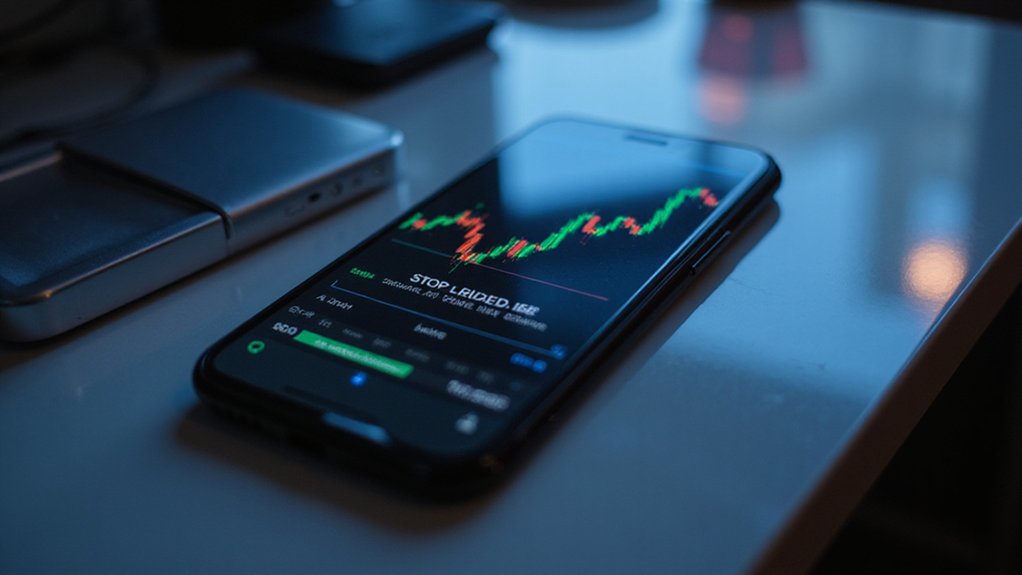Cryptocurrency market capitalization—calculated by multiplying circulating supply by current price—functions as both a quantitative benchmark and qualitative stability indicator. Bitcoin’s trillion-dollar valuation anchors the ecosystem, typically commanding 40-50% of the aggregate market. Larger caps signal reduced volatility while mid-caps ($1-10B) historically outperform during bull runs. The common misconception that market cap equals invested capital overlooks its true nature as a theoretical valuation metric. Further exploration reveals nuances beyond this simplified calculation.

The cryptocurrency market capitalization—that seemingly straightforward yet deceptively complex metric—has emerged as the de facto standard for measuring the relative size and importance of digital assets in an increasingly crowded ecosystem.
Calculated by multiplying a coin’s circulating supply by its current price, this figure serves as both quantitative benchmark and qualitative indicator, offering investors a first-approximation lens through which to view the relative stability and adoption of competing protocols.
What many newcomers fail to grasp, however, is the distinction between circulating supply caps (reflecting currently mined or minted coins) and fully diluted valuations (accounting for theoretical maximum supply)—a difference that explains why Bitcoin’s approximately 19.7 million coins in circulation represent a different market reality than its eventual 21 million coin limit.
The gap between circulating coins and maximum supply creates two distinct valuation realities—one present, one theoretical.
The significance of market capitalization extends well beyond simple arithmetic.
Larger caps typically signal reduced volatility risk, with Bitcoin’s trillion-dollar valuation anchoring the entire crypto ecosystem as it frequently constitutes 40-50% of the aggregate market.
This metric inadvertently acts as a rough proxy for network security, as higher-valued chains naturally attract more miners or validators to secure them.
Perhaps most importantly for investors, cap classifications create practical portfolio filters—conservative strategies typically exclude sub-$50 million micro-caps while overweighting established large-caps exceeding $10 billion.
Market dynamics reveal that capitalization correlates strongly with liquidity and price sensitivity.
The global cryptocurrency market cap recently surpassed $2.56 trillion, showing remarkable growth since its historical peak of nearly $3 trillion in November 2021.
Small-cap assets experience amplified percentage moves compared to their large-cap counterparts when faced with equivalent capital flows.
The relationship between Bitcoin’s dominance and altcoin growth typically exhibits inverse correlation during market cycles, with mid-caps ($1-10 billion) historically outperforming during bull markets.
Common misconceptions persist nonetheless—chiefly that a $100 billion market cap implies $100 billion invested, when in fact the figure represents price multiplied by supply rather than aggregate capital inflows.
This calculation methodology remains consistent across the crypto industry, with market caps serving as a total dollar value representation similar to how company stocks are valued in traditional markets.
Many investors utilize market cap calculators to quickly determine the current valuation of cryptocurrencies without performing manual calculations.
Investors would be wise to analyze cryptocurrency market caps with nuance, recognizing both their utility as comparative tools and their limitations as absolute value indicators.
Frequently Asked Questions
How Does Inflation Affect Cryptocurrency Market Capitalization?
Inflation’s impact on cryptocurrency market capitalization presents a fascinating dichotomy: while fiat devaluation often drives investors toward “digital gold” like Bitcoin (boosting cap figures), the accompanying interest rate hikes typically drain liquidity from speculative assets.
Cryptocurrencies with fixed supplies tend to outperform during inflationary periods, whereas central banks’ aggressive monetary responses can simultaneously trigger market-wide contractions—creating a complex economic pas de deux that defies simplistic correlation models.
Can Market Cap Manipulation Occur in Cryptocurrency Markets?
Market cap manipulation abounds in cryptocurrency markets through various schemes.
Actors deploy pump-and-dump tactics to artificially inflate token values, while wash trading creates illusory volume—both generating false market signals.
Oracle manipulation in DeFi systems enables exploitative positions (as Mango Markets’ $115M heist demonstrated), and insider trading leverages asymmetric information ahead of exchange listings.
The pseudonymous nature of blockchain transactions complicates regulatory enforcement, creating fertile ground for manipulative practices.
Which Cryptocurrencies Have the Most Stable Market Capitalization?
Stablecoins demonstrably outperform other cryptocurrencies in market capitalization stability, with Tether (USDT), USD Coin (USDC), and Dai (DAI) leading the pack.
Their stability mechanisms—primarily dollar-pegging and diverse asset backing—insulate them from the volatility that plagues their more capricious counterparts.
Despite occasional stress tests (USDT’s brief de-pegging during the Terra collapse), these digital assets consistently rebound, buoyed by institutional involvement and broad exchange adoption that fosters liquidity across trading pairs.
How Do Forks Impact the Market Capitalization of Cryptocurrencies?
Forks create fascinating market cap dynamics, often producing counterintuitive outcomes.
When blockchains split, holders receive equivalent amounts of new tokens—effectively doubling their holdings but not necessarily their value.
The market then recalibrates, with Bitcoin forks like Bitcoin Gold and Bitcoin Diamond increasing total capitalization (1% and 5% respectively), while others like Bitcoin Cash showed negligible impact.
Whale activity around forks frequently triggers volatility as large traders manipulate pre-fork accumulation and post-fork selloffs.
When Should Investors Prioritize Volume Over Market Capitalization?
Investors should prioritize volume over market capitalization during sharp sentiment shifts, when trading newly launched projects, or amid technical consolidation phases preceding breakouts.
Volume spikes—particularly those 2-3× above average—often telegraph imminent price movements before market cap adjustments materialize.
In low-liquidity environments, where thin order books amplify volatility, volume trends reveal real-time demand dynamics that lagging market cap metrics simply cannot capture.









